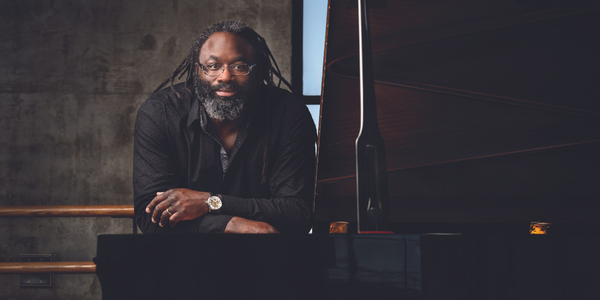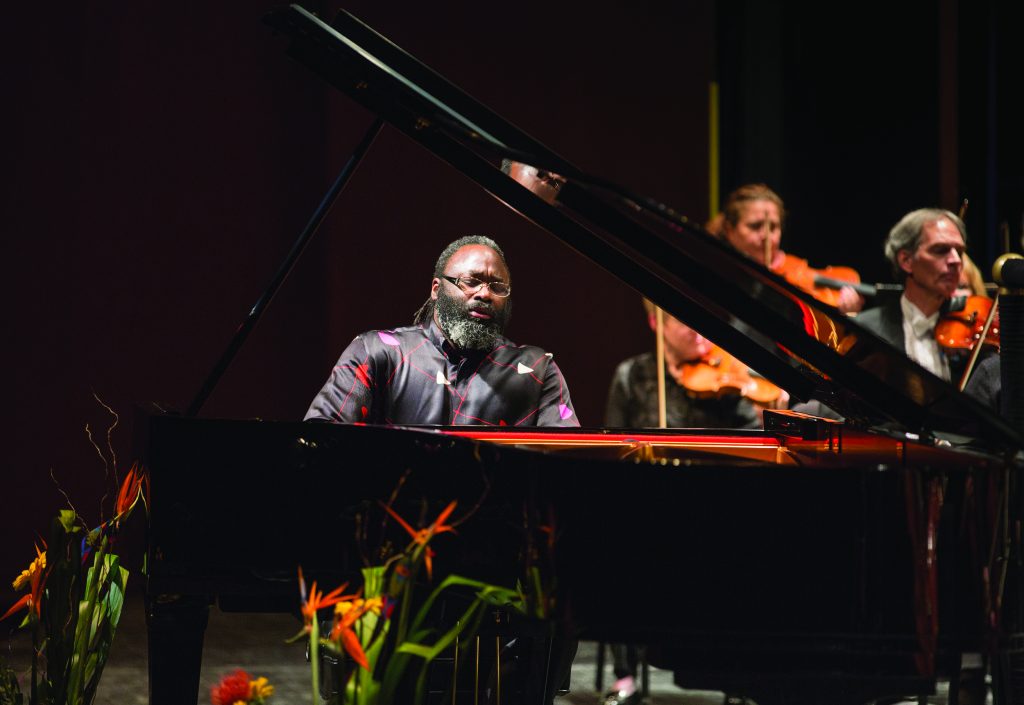We would like to thank Artina McCain for this interview with pianist Awadagin Pratt. This week on Piano Inspires Podcast, Artina McCain is interviewed! Check out the latest installment of the Piano Inspires Podcast on Wednesday, May 22, 2024. To learn more, visit pianoinspires.com. Listen to our latest episode with Robert Weirich on Apple Podcasts, Spotify, YouTube, or our website!

I recently had the pleasure of interviewing concert pianist, conductor, and professor at the University of Cincinnati’s College-Conservatory of Music, Awadagin Pratt. Born in Pittsburgh, Pennsylvania, Awadagin Pratt has received the Distinguished Alumni Award from Johns Hopkins, an honorary doctorate from Illinois Wesleyan University, and an Avery Fisher Grant. In November 2009, Pratt was one of four artists selected to perform at a music event at the White House that included student workshops hosted by the First Lady, Michelle Obama. He also performed in concert for guests including President Obama. He has played numerous recitals throughout the United States and internationally, including four tours of Japan. We had a great chat about his historic career, the competition his foundation will sponsor, and—BBQ!
Artina McCain
Tell me about your early exposure to music.
Awadagin Pratt
My father listened to classical music in our home. He was a nuclear physicist, but he loved music and actually played the organ as a child. He would often record from the radio to the old reel-to-reel tape machines. It was the only music in the house, and I liked it. My parents started me with piano lessons when I was six, but when we moved to Brazil for a year, I stopped taking lessons. I restarted piano lessons when I was eight and then began taking violin lessons when I was nine.

AM:
How did you end up choosing piano over the violin?
AP:
When I was sixteen years old, I entered the University of Illinois as a violin major. Illinois wouldn’t allow a double major, which is what I wanted to do, and somehow it was decided for me that I was going to study violin. I was also studying piano with a teaching assistant who would always say, “You know, you could be a piano major.” I thought, “Well, it’s not allowed.” After a couple of years, I was able to study with a piano faculty member there, but then I transferred because I really wanted to be a double major. I also wanted a conservatory atmosphere. Although the faculty and the teachers were great, Illinois leaned towards music education more than performance. I wanted to be in a more concentrated, intensive musical environment. I applied to Cleveland Institute of Music, New England Conservatory, and Peabody Institute. I was accepted to New England on violin and not piano. I was accepted to Cleveland on piano and not violin. I was accepted to Peabody on both instruments, so I went to Peabody.
AM:
Talk about fate! What happened next?
AP:
At that age, I was really focused on the central European repertoire—the core part of our repertoire— and was deciding whether to concentrate on violin or piano. It would have been hard for me to have a solo career as a violinist, and I knew I didn’t want to play in an orchestra, so I drifted towards piano and conducting.
I graduated with degrees in violin, piano, and conducting from Peabody, but then I went on to do an Artist Diploma in piano and a Graduate Performance Diploma in conducting. I slowly stopped practicing the violin. I still play occasionally, but just random chamber music or donor events. When people are paying over $100 a seat, I play the violin!
AM:
Well, it’s good for the piano world that you chose piano! Let’s recap your historic win at the Naumburg Competition. How did your international career evolve after entering that competition?
AP:
That time of life was interesting. A few years before, I was in a competition sponsored by what is now called the American Pianists Association, formerly known as the Beethoven Foundation. I made the final twelve in that competition and then the final six. You know, they say no competition is fair except for the one that you win! Menahem Pressler and Leon Fleisher were judges. The third judge was Alan Hughes, who was a retired New York Times critic. Hughes told me that my playing was too individualistic, too different to win a competition. “You should try and play for conductors and find a conductor to take you under their wing.” I thought, “Ha! Let me call Daniel Barenboim and see what we can do.”
Well, Peabody started having their students play for some of the conductors who were coming in, but nothing came of it. Also, I was trying to pursue a conducting career at the time and had an audition in April for an assistant conductor program with the Louisville Philharmonic, which I didn’t get into. Then, the Naumburg Competition was in May.
The previous year, I went to Banff Centre for a three-month residency. Over the years, I had so many lessons— violin, chamber, conducting, and piano from many different teachers. Sometimes I would be playing the Brahms Violin Sonata on the violin for my teacher Mitchell Stern, but also the piano accompaniment for Sam Sanders who played with Itzhak Perlman and others on the violin faculty—Berl Senofsky, Sylvia Rosenberg, and more.
I was taught all these different ways of performing and interpreting music. Each one had their own internal logic. Each interpretation made sense to the thinking of that performer, that teacher, and I wanted to go and figure it out for myself. How would I assemble a piece of music that I was learning? How would I prepare for it intellectually? What would my practice regime look like? How would I get to know the piece, and how would I perform it?
The year after Banff, I was really done with school. I was in my tenth year of school, and I started to finish my degree by playing all my required recitals. I ended up playing three that year. It turned out that I had performed the requirements for the Naumburg Competition, which was two full recital programs and two concertos.
We hope you enjoyed this excerpted interview of Awadagin Pratt by Artina McCain. To read the full article, click here.
more on artina mccain
- WEBINAR: Introduction to the Frances Clark Center’s New Online Course: Piano Teaching through the Lens of Diversity, Equity, and Inclusion with Leah Claiborne, Susanna Garcia, and Artina McCain
- WEBINAR: Best Piano Pedagogy Practices through the Lens of Diversity, Equity, and Inclusion with Leah Claiborne and Artina McCain
- COURSE: Piano Teaching through the Lens of Diversity, Equity, and Inclusion
- COURSE: Unsung Heroes in Piano Pedagogy: 20 Pieces by Black Composers to Use in Your Studio Now
- FROM THE ARTIST BENCH: Coleridge-Taylor Perkinson: Scherzo and Toccata with Artina McCain
- MAGAZINE ARTICLE: Delivering Pianos to the University of Memphis Students by Artina McCain, Jonathan Tsay, and Casey Hilder
- MAGAZINE ARTICLE: Building Diversity in Your Music Career: Interview with Michelle Cann by Artina McCain